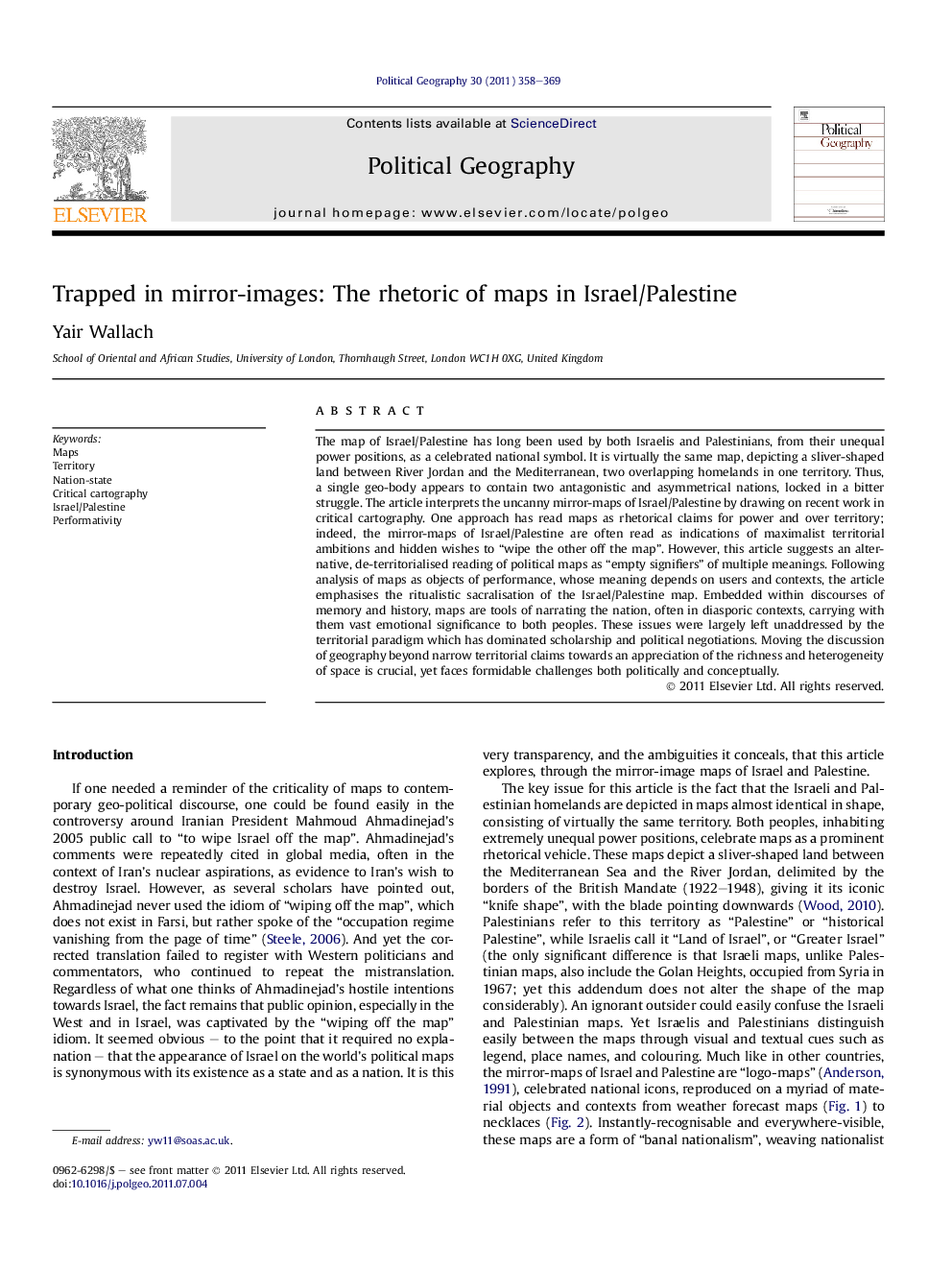| کد مقاله | کد نشریه | سال انتشار | مقاله انگلیسی | نسخه تمام متن |
|---|---|---|---|---|
| 1062056 | 947930 | 2011 | 12 صفحه PDF | دانلود رایگان |

The map of Israel/Palestine has long been used by both Israelis and Palestinians, from their unequal power positions, as a celebrated national symbol. It is virtually the same map, depicting a sliver-shaped land between River Jordan and the Mediterranean, two overlapping homelands in one territory. Thus, a single geo-body appears to contain two antagonistic and asymmetrical nations, locked in a bitter struggle. The article interprets the uncanny mirror-maps of Israel/Palestine by drawing on recent work in critical cartography. One approach has read maps as rhetorical claims for power and over territory; indeed, the mirror-maps of Israel/Palestine are often read as indications of maximalist territorial ambitions and hidden wishes to “wipe the other off the map”. However, this article suggests an alternative, de-territorialised reading of political maps as “empty signifiers” of multiple meanings. Following analysis of maps as objects of performance, whose meaning depends on users and contexts, the article emphasises the ritualistic sacralisation of the Israel/Palestine map. Embedded within discourses of memory and history, maps are tools of narrating the nation, often in diasporic contexts, carrying with them vast emotional significance to both peoples. These issues were largely left unaddressed by the territorial paradigm which has dominated scholarship and political negotiations. Moving the discussion of geography beyond narrow territorial claims towards an appreciation of the richness and heterogeneity of space is crucial, yet faces formidable challenges both politically and conceptually.
► Israelis and Palestinian use virtually the same map to describe their homelands.
► Israel/Palestine maps are often read as territorial claims and statements of denial.
► Performative aspects of the Israel/Palestine maps have largely been overlooked.
► Emotional attachment to the maps is huge in Israel/Palestine and their diasporas.
► The territorial imagery has failed to address deeper aspects of the conflict.
Journal: Political Geography - Volume 30, Issue 7, September 2011, Pages 358–369